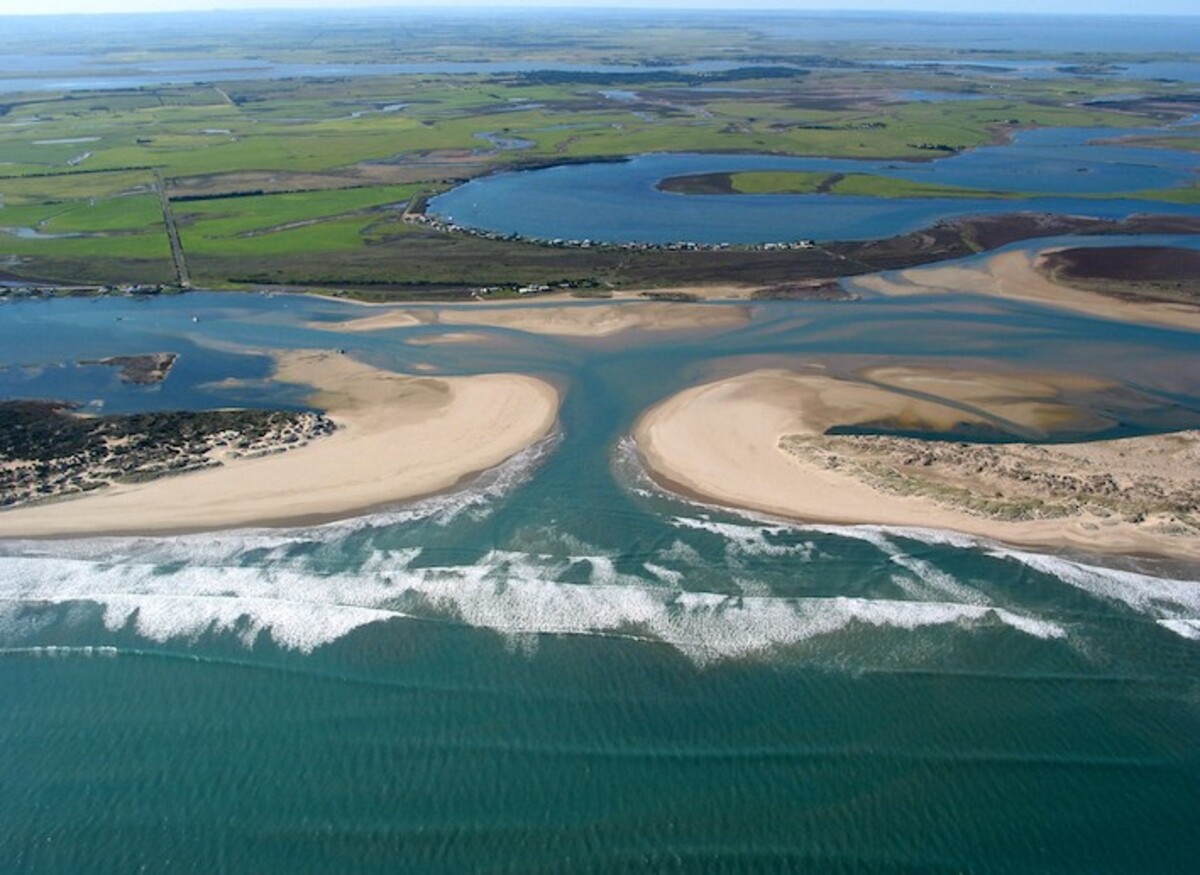Algal bloom spreads to the Coorong
Julia Beckett
08 June 2025, 10:00 PM
 An algal bloom hotspot near the Murray Mouth has spread into the Coorong.
An algal bloom hotspot near the Murray Mouth has spread into the Coorong.The storm in late May and subsequent wintry weather has dissipated some of the algal bloom affecting the south coast and Kangaroo Island, but it has also now spread to the Coorong.
Testing of water in the Coorong North Lagoon has confirmed the presence of the Karenia strain of algae.
The testing, conducted by the Department for Environment and Water (DEW) and Department of Primary Industries and Regions (PIRSA), shows the algae is present in the between Seven Mile Basin and Long Point.
Experts believe the current Karenia algae strain flowed through the Murray Mouth and into the lagoon during the May 26 storm and May 27 high tide.
The Karenia mikimotoi algae has been detected in numerous locations along the Fleurieu Peninsula, Yorke Peninsula and Kangaroo Island since March this year.
The agencies will test the water in the Coorong weekly to understand how the situation is developing and to inform any potential future management options.
“The composition of the Coorong means that it flows naturally to the open Murray Mouth and vice versa when high ocean tides can enter the lagoon.
“This current algal bloom is constantly changing, meaning that its spread and dissipation is dictated by the weather and ocean conditions.
“The dynamic nature of the algae means its effect on people, coastal industries and the ecosystem is unpredictable.
“Unfortunately, there is no feasible method to dilute or dissipate the bloom.”
PIRSA has issued an update on the way the bloom is affecting Kangaroo Island and the south coast, saying sea surface temperatures have stabilised across shallow coastal and gulf waters.
It says daily satellite measures of chlorophyll-a levels, an indicator of algae concentrations, have decreased in some areas but have increased off the southeastern tip of the Fleurieu Peninsula from Tunkalilla to Victor Harbour, and in a small hotspot observed near Goolwa and the Murray Mouth.
DEW Strategic Projects Director Grant Pelton says the connectiveness of the Coorong to the ocean had numerous environmental benefits but also came with its risks.
“The state government agencies involved will continue to monitor the algal bloom in the Coorong and the rest of the state.
“While we can hope that water temperatures continue to drop and prevent the algae from growing in the ocean, the Coorong’s unique low water flow makes it more difficult to dissipate and there is a possibility that the algal bloom remains there for some time.
“Discussions about the flushing of the North Lagoon will be considered, however there are positive and negative ramifications for the river’s ecology, all of which will need to be carefully considered by the experts.”
The Coorong region remains open. Visitors are advised to check signage and avoid contact with discoloured water, foamy water, or water where marine life is dead or in poor health.
For the latest updates on the harmful algae bloom, visit the DEW website.